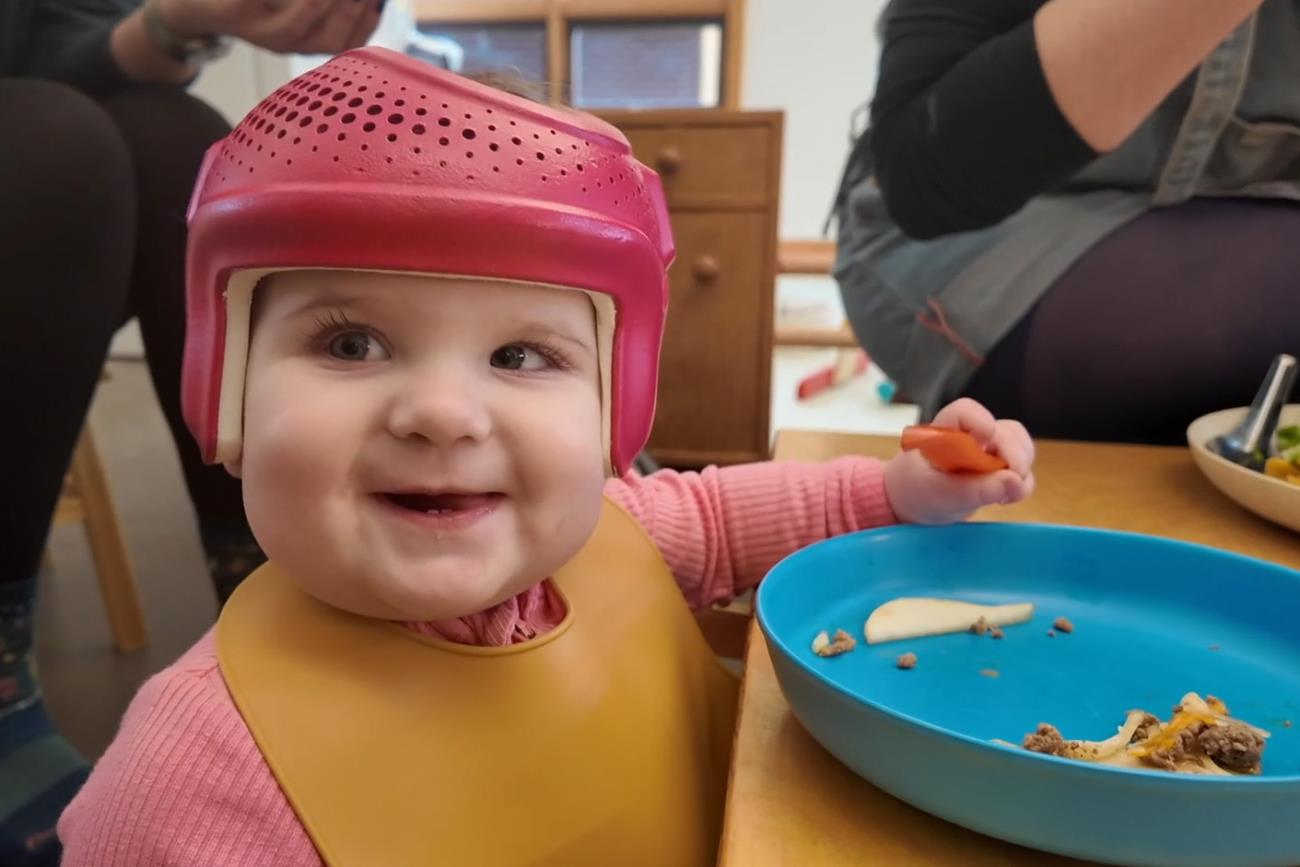As we enter the season of many holidays, it is a wonderful time to reflect on all the meanings that food can have. Food can be used as a means of connection, showing love, building community, and preserving traditions. In the Nido, meals are a central part of our community. Exploring food provides young children with opportunities to develop focus and patience, as well as fine and gross motor skills and language.
With considerations made for food shape and texture, we serve babies lunch and snacks every day. The adults in the environment sit down and eat with the babies to help model taking bites and utilizing utensils. The children in the Nido are learning the rhythm of meals through repetition. Every day, we begin by washing our hands at the sink. They then make their way to the table and wait to be served food. Once everyone has joined the community table and has a plate of food, we sing the same song that all the other environments at our school sing at meals: “Look around and you will see/ community, a family/ we’re together, we are one.” The children explore their food independently, ask for more, and eventually make it clear that they are done. Older children will carry their plates to the compost and then deposit them in the dish tub before returning to the sink to wash their hands. This cycle is repeated at meal times throughout their entire Nido experience.
Whether the babies start with Baby Led Weaning (BLW) or purees, we practice infant self-feeding. For babies having purees, they will sit at the table and be offered a pre-loaded spoon that they can then bring to their mouths. We will trade spoons with them until they become interested in loading their own utensils by scooping or dipping them in a bowl. For babies eating table foods, we offer them a plate of the same food that we are eating. Younger babies are offered larger pieces of food so that they can have more success with picking them up and bringing them to their mouths. Here is a (long, but so informative) page on food sizes and shapes.
Spoons, stick-shaped teethers, and larger pieces of food also help with oral mapping skills that will help with the development of chewing later on. Our youngest eaters frequently gag while exploring teethers, spoons, and food, which is important for them to learn how far back it is safe to put things in their mouths. There are excellent videos available that explain the difference between gagging and choking. Gagging and funny faces don’t mean that babies dislike a particular food; they are just part of the experience of food exploration.
It is so important that babies have the opportunity to explore foods and get messy. As they explore at the table, they are exposed to various textures and temperatures. They develop confidence as this is one of their first chances to be truly independent; we can support this by allowing them the freedom to explore various ways of getting the food to their mouths. Mixing foods that seem unpalatable to us frequently happens, and we support them without negative commentary.
As babies explore food at the table, they are developing their hand strength and precision with their various grasps. Closer to nine months, we see them begin to use their thumb in opposition to one or more fingers to pick up smaller bites of food, so we transition to serving them more diced-up options to provide opportunities to strengthen their pincer grasp. Also, sitting at the table is great for their gross motor development as well as it requires core strength to sustain the seated position.
At the table, we use the signs for “eat,” “drink,” “water,” “milk,” “more,” “sit,” and “all done.” We verbalize these words while signing them to help connect the sign to our spoken language. We never expect the babies to ask for more, but we will say and sign “more” in response to shouts and pointing before helping to tong or spoon more food onto their plates. As they get older, we begin to see the babies making their own approximations of these signs both at and away from the table. We see “all done” in situations they would rather avoid and “more” at Group when they hear a favorite song.
Mealtime is full of opportunities for young children to construct themselves. It encompasses all the important skills that are developed during their time in the Nido, and I am fortunate to help support and facilitate this growth every day in our environment.
